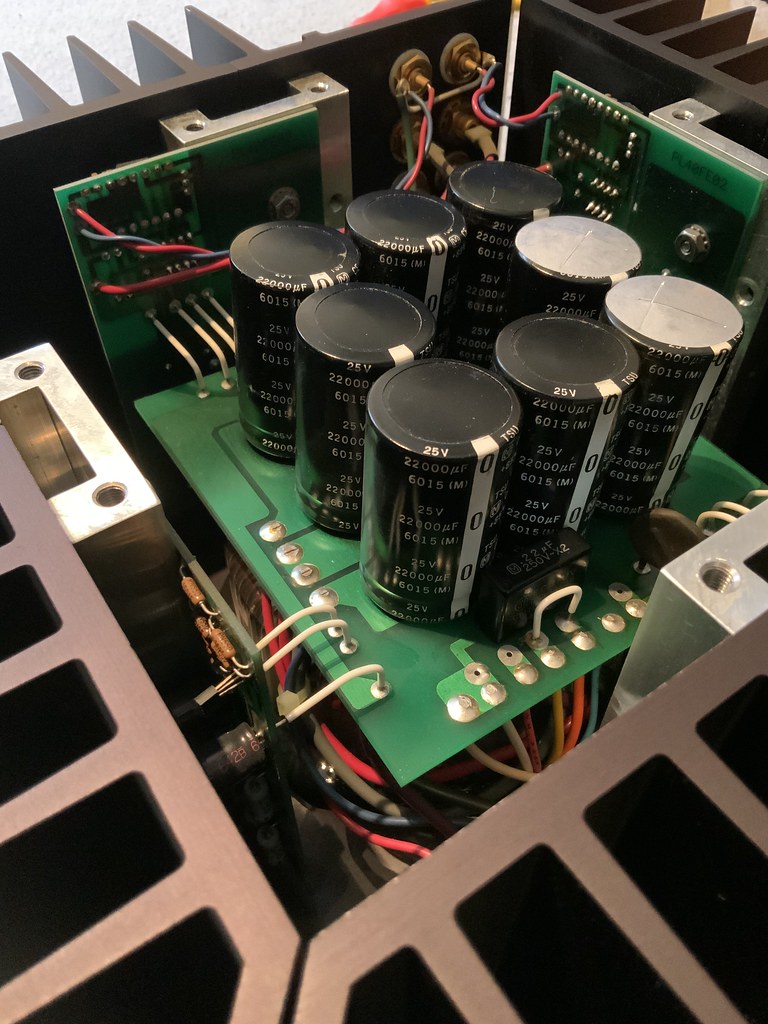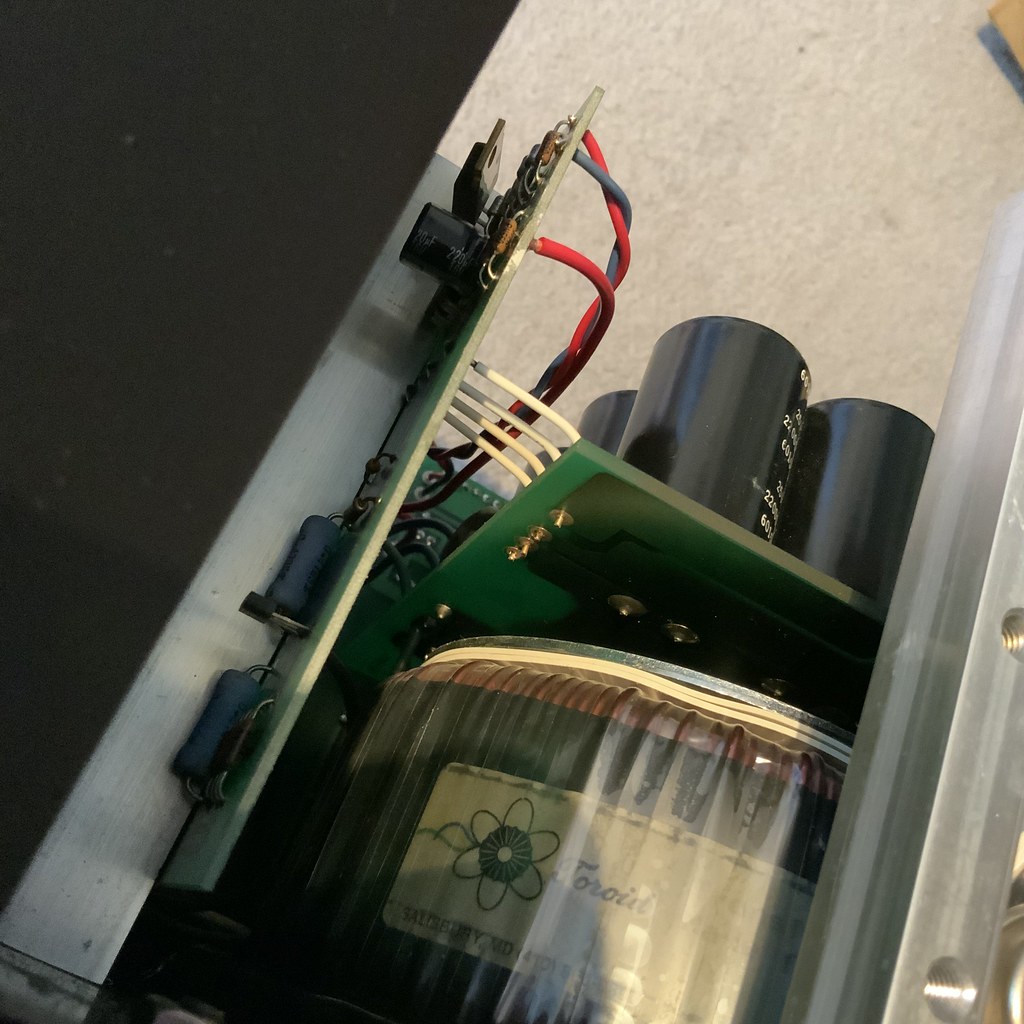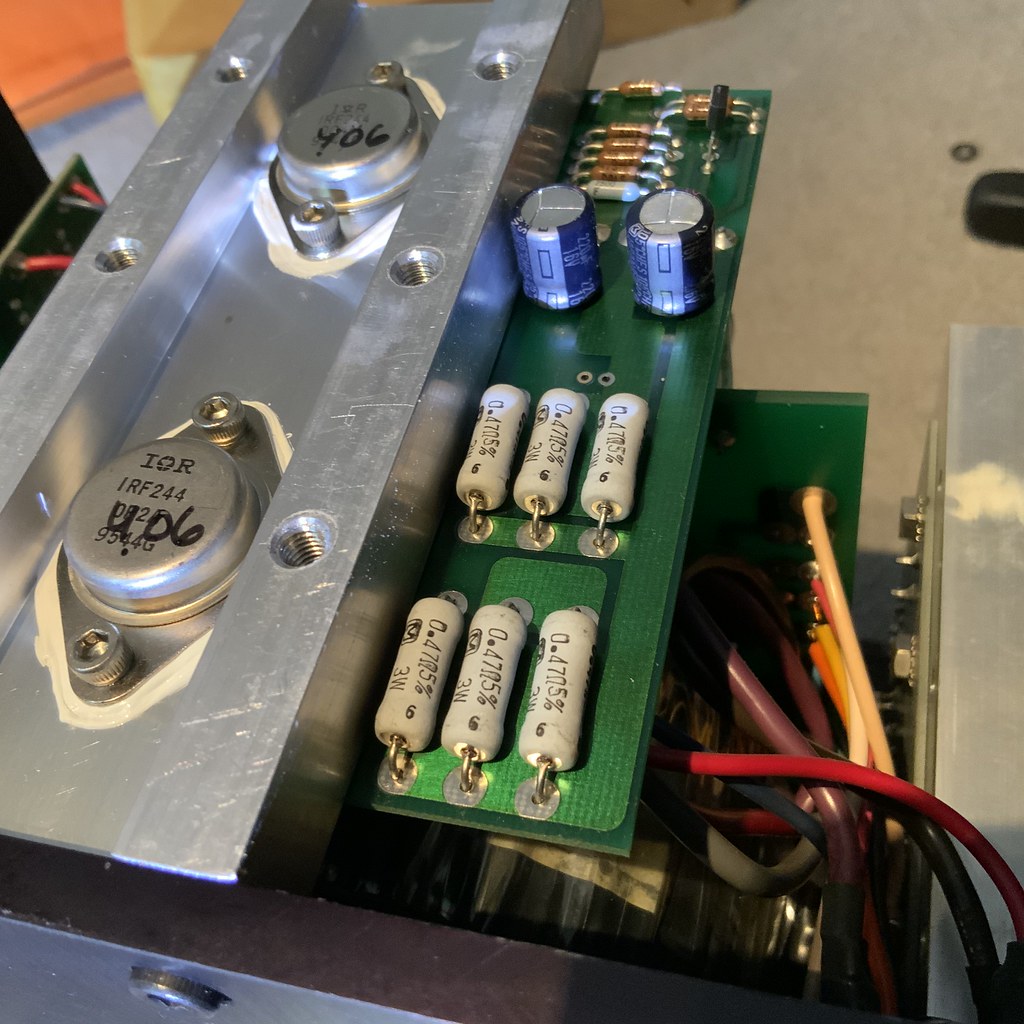You are using an out of date browser. It may not display this or other websites correctly.
You should upgrade or use an alternative browser.
You should upgrade or use an alternative browser.
Pass Aleph 3
- Thread starter Tony L
- Start date
Darren
So gentle when he tries to understand.
No one desperately needs a modern kitchen.
LOL! You two haven't seen the state of the current one!Nobody ‘ desperately needs a modern kitchen’. Get a grip man!
Actually...... This is perfect. When the speakers arrive I'll say that Tony and Mutty said I should get them. ......
lordsummit
Moderator
I’m looking forward to a visit, looks fabulous. It’s heading for the main system then?
lordsummit
Moderator
PS Justification: I just have too much duplication at present, I certainly don’t need both the two Stereo 20s (I have a spare one), and the TL12 Plus monos, so I suspect in time (assuming I like the Pass) I’ll sell the former two and just keep the TL12+ and all the valves, and that’s the cash back. I’ve always wanted to try a proper class A amp as I’ve liked Krells, Sugdens etc, and I’d never need a really big powerful one. Nor did I want anything with a fan in it. The Nelson Pass stuff is superbly documented and serviceable and this looks to be a very simple and sustainable amp. This one is a classic, I love the brutalist look, and it is small enough to fit where I want it to fit. It is also apparently pretty insensitive so that means I’m not trapped on the lowest output setting of the Verdier (the higher, lower-feedback settings sound better as far as I can tell, so I’ll get a better sounding preamp for free!).
I feel you missed that it might help keep you warm in winter.
Tony L
Administrator
It’s heading for the main system then?
That’s the plan. In theory it should match the Verdier pre very well and should be fine driving any of speakers I own. To be honest it’s a curiosity thing more than anything, I really like the main system as-is and I certainly won’t be selling anything there. I just want to see what an allegedly decent solid state class A amp brings in this and the 149 & LS3/5A contexts, and how it contrasts to the valve amps. I also quite fancy another ‘project’, e.g. assuming it is untouched I plan to recap it etc before really trusting it. 25 years is a long time for such a hot running amp, though obviously I don’t know how hard a life it has had.
dan m
pfm Member
Congrats. A bit jealous since I own a beautiful example of an Aleph P (version 2). Recently serviced by Pass Labs for peanuts. Volume is via relay switched fixed resistors. Was about $7K when new, so a real engineering statement piece back then. Only downside now is the remote codes conflict so I carefully taped over the IR receiver.
dan m
pfm Member
Nice thing about Pass Labs is they will tell you the service history of your component. Mine had been there twice. It was likely one of the last made. A real person in the repair department picks up the phone too. And lots of great advice on the diyaudio forum, including comments from ‘Papa’.
earlofsodbury
Wastrel.
Congrats on snaffling-up the Aleph, Tony. I'm loving the J2 - a fundamentally similar beast. Sound aside, my favourite aspect is that Pass knowingly embraces a little second-harmonic distortion, so the amps are simultaneously very well engineered and a 1-finger-salute to the measurebators...
My limited understanding of NP's power amp designs is that overall gain is less of an issue with passive pres with modern high voltage-output sources, but overall frequency balance can be affected due to mismatched loading seen by output/input stages. For curiosity's sake I must try the J2 with my pot-in-a-box pre at some point.
With the big 3-way Hecos (which may be fairly sensitive overall, but I suspect roller-coaster impedance curves) the J2 runs very hot, and bearing in mind it's ~12 years old I'll probably pull the 85C-rated smoothing caps and replace with something specifically designed with long life at high temps.
Not much else to tinker with - the rectifier bridges are Schottkey and more-than-good-enough, all the resistors are either 1/4W Dale metal films or 1/2W wirewound Panasonic, and all the rest is neatly and minimalistically done. In fact the only worthwhile change has been binning the over-bright blue LEDs for subtler green ones!

My limited understanding of NP's power amp designs is that overall gain is less of an issue with passive pres with modern high voltage-output sources, but overall frequency balance can be affected due to mismatched loading seen by output/input stages. For curiosity's sake I must try the J2 with my pot-in-a-box pre at some point.
With the big 3-way Hecos (which may be fairly sensitive overall, but I suspect roller-coaster impedance curves) the J2 runs very hot, and bearing in mind it's ~12 years old I'll probably pull the 85C-rated smoothing caps and replace with something specifically designed with long life at high temps.
Not much else to tinker with - the rectifier bridges are Schottkey and more-than-good-enough, all the resistors are either 1/4W Dale metal films or 1/2W wirewound Panasonic, and all the rest is neatly and minimalistically done. In fact the only worthwhile change has been binning the over-bright blue LEDs for subtler green ones!
Tony L
Administrator
It exists! Cosmetically very tidy, a couple of light marks, but nothing that triggers me. It looks pretty damn cool!

Now doing my usual pre-flight checks. Fuse: correct value and ok. Nothing rattles. Pop the lid and look for repairs, botches, hackery, failing components etc. I can see no evidence of any rework at all. No caps have leaked yet, though the eight big 22,000 do look to be bulging a little. They are all the same despite two having lost their plastic hats. I’m currently just running it on the floor for an hour or two without any speakers connected and keeping an eye on DC offset, which looks very good at <5 mV per channel at present.
Given I don’t like the look of the PSU caps, and can’t really see the smaller ones well enough, I’m not going to install it in the system as a day-to-day amp yet. I want to recap it first. Any recommendation for some really nice quality drop-in 22,000uF replacements would be welcome. I want to up the temp rating to 105c, but otherwise like-for-like. I think all the other electrolytics are 220uF, so I’ll be needing a set of those too. Again any recommendations for good brands from known sources would be most welcome, I’m thinking top-end Panasonic, Kemet, Rubycon etc.
PS The physical construction is fairly complex, but I think I’ve figured out how to get into it (the PSU board is bolted to the toroidal transformer below via the big centre bolt that runs through to the bottom (a bit like a JR149!), then each of the four boards are hard-wired to that. I assume you remove the heat-sinks and then can desolder the connecting leads thus freeing everything. If anyone has actually worked on one of these please let me know as any tips would be welcome.

Now doing my usual pre-flight checks. Fuse: correct value and ok. Nothing rattles. Pop the lid and look for repairs, botches, hackery, failing components etc. I can see no evidence of any rework at all. No caps have leaked yet, though the eight big 22,000 do look to be bulging a little. They are all the same despite two having lost their plastic hats. I’m currently just running it on the floor for an hour or two without any speakers connected and keeping an eye on DC offset, which looks very good at <5 mV per channel at present.
Given I don’t like the look of the PSU caps, and can’t really see the smaller ones well enough, I’m not going to install it in the system as a day-to-day amp yet. I want to recap it first. Any recommendation for some really nice quality drop-in 22,000uF replacements would be welcome. I want to up the temp rating to 105c, but otherwise like-for-like. I think all the other electrolytics are 220uF, so I’ll be needing a set of those too. Again any recommendations for good brands from known sources would be most welcome, I’m thinking top-end Panasonic, Kemet, Rubycon etc.
PS The physical construction is fairly complex, but I think I’ve figured out how to get into it (the PSU board is bolted to the toroidal transformer below via the big centre bolt that runs through to the bottom (a bit like a JR149!), then each of the four boards are hard-wired to that. I assume you remove the heat-sinks and then can desolder the connecting leads thus freeing everything. If anyone has actually worked on one of these please let me know as any tips would be welcome.
Robert
Tapehead
Looks great Tony. Eight 22000uf caps! - crikey that's some switch on power surge 
I notice they are 25V caps. Not sure what the rail voltages are on this amp but likely quite close to that.
If going to 105deg then no arm upping the cap voltage a notch or two. That will also likely maintain cap physical size since they are all a bit more compact these days.
I always used Panasonic where possible but any of the brand's you mention will be just fine.
I notice they are 25V caps. Not sure what the rail voltages are on this amp but likely quite close to that.
If going to 105deg then no arm upping the cap voltage a notch or two. That will also likely maintain cap physical size since they are all a bit more compact these days.
I always used Panasonic where possible but any of the brand's you mention will be just fine.
Tony L
Administrator
Thanks Rob. The schematic (linked above) implies the voltage rails are +/- 25V, so yes, its running those on the limit. If you have any recommendations for specific caps just let me know and I’ll order a set. There is only a 5A fuse in the mains plug, and the amp’s own internal fuse is 2A, so I assume it limits inrush somehow.
Now it is pretty warm DC offset looks to be settling at 12-15mV or so, so still looks well in spec (<100mV).
PS It has a blue LED, which usually has me thinking about killing random strangers, but it is very dim and subtle, plus lost deep in the heatsink so actually looks rather nice. It looks more like the lovely blue of an old 70s receiver.
Now it is pretty warm DC offset looks to be settling at 12-15mV or so, so still looks well in spec (<100mV).
PS It has a blue LED, which usually has me thinking about killing random strangers, but it is very dim and subtle, plus lost deep in the heatsink so actually looks rather nice. It looks more like the lovely blue of an old 70s receiver.
Robert
Tapehead
Thanks Rob. The schematic (linked above) implies the voltage rails are +/- 25V, so yes, its running those on the limit. If you have any recommendations for specific caps just let me know and I’ll order a set. There is only a 5A fuse in the mains plug, and the amp’s own internal fuse is 2A, so I assume it limits inrush somehow.
Now it is pretty warm DC offset looks to be settling at 12-15mV or so, so still looks well in spec (<100mV).
PS It has a blue LED, which usually has me thinking about killing random strangers, but it is very dim and subtle, plus lost deep in the heatsink so actually looks rather nice. It looks more like the lovely blue of an old 70s receiver.
I just skim read the manual. I've a lot of time for Nelson Pass, I think he has a really good handle on the little design spec changes that can impact sonics, and those which don't, and I love the circuit simplicity which forms the foundation of his designs.
Re the caps, worth checking the how they mount to the board before doing anything to determine the pitch and any stabilizing lugs.
Tony L
Administrator
Re the caps, worth checking the how they mount to the board before doing anything to determine the pitch and any stabilizing lugs.
I’ve just powered it off. I’ll unbolt one of the heatsinks later and see if I can get a look at the bottom of the board. My best guess looking at the board layout in the schematic is they are the standard ‘snap in’ type but soldered-in. Annoyingly I’ll not be able to get a ruler in without totally disembowelling the thing.
a.palfreyman
pfm Member
Tony,
Stare into the blue LED.
That will fire you up.....
Stare into the blue LED.
That will fire you up.....
Tony L
Administrator

The smoothing caps are conventional through-hole with a 10mm pin spacing.

The little electrolytic caps are indeed 220uF and are 16V and 105C. Visually they look fine, but if I’m taking it apart to the extent I have to in order to replace the main smoothing caps I’ll obviously replace them all. I only want to do this once!

